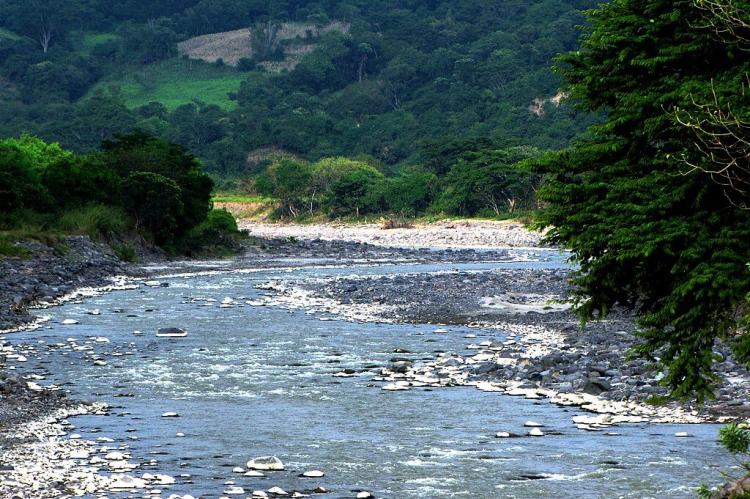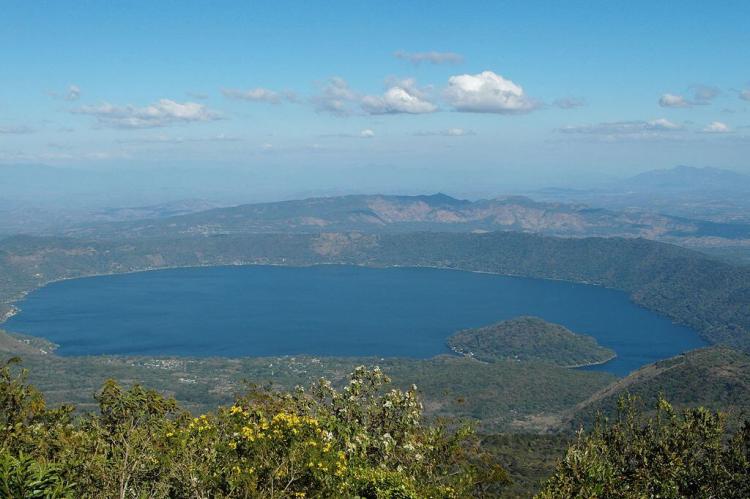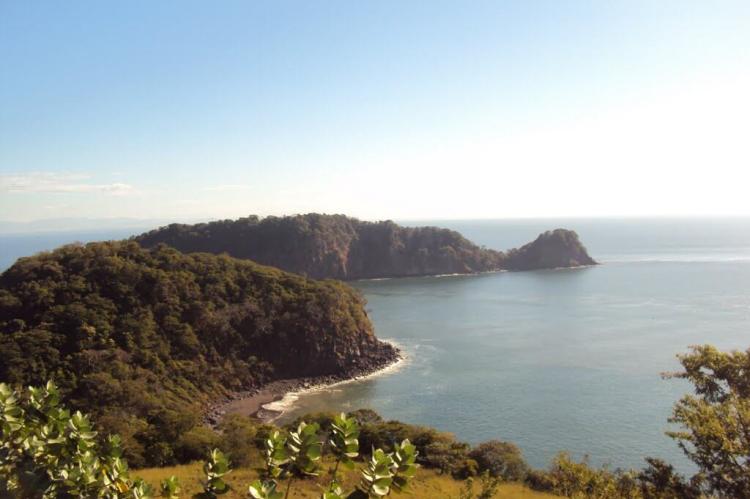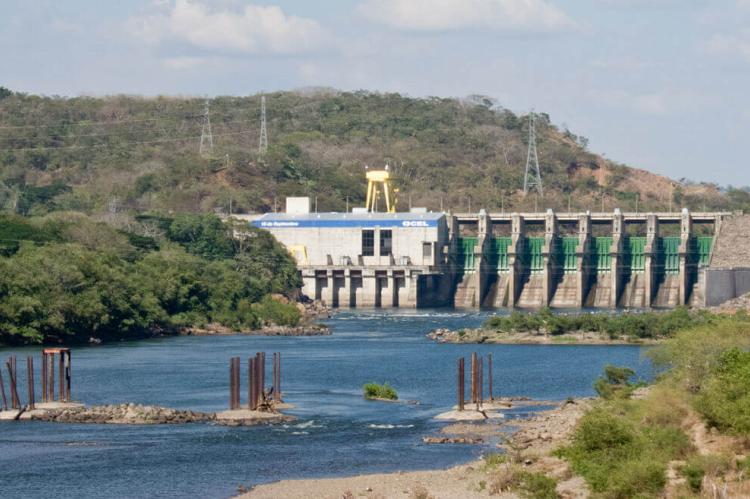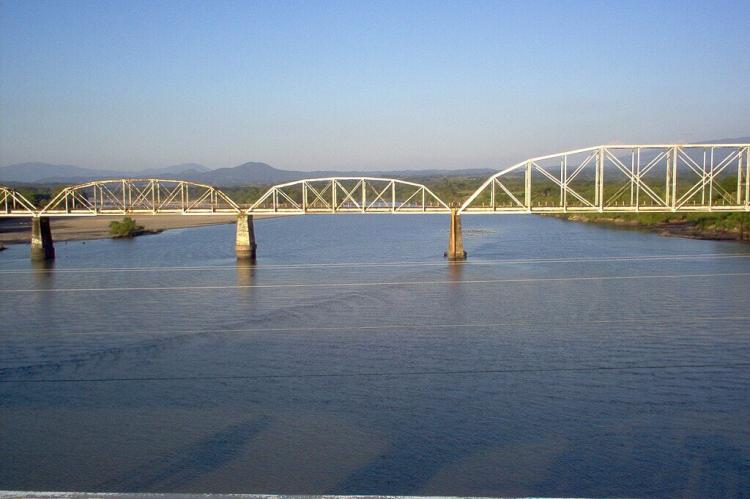Water Bodies of El Salvador
El Salvador is home to diverse water bodies that contribute to its natural beauty and ecological significance. From expansive lakes and picturesque lagoons to bays, gulfs, and meandering rivers, these water bodies shape the landscape and play essential roles in the country's ecosystem and economy.
Water Bodies of El Salvador
El Salvador, bordered by the Pacific Ocean, is home to diverse water bodies contributing to its natural beauty and ecological significance. From expansive lakes and picturesque lagoons to bays, gulfs, and meandering rivers, these bodies of water shape the landscape and play essential roles in the country's ecosystem, economy, and recreational activities.
El Salvador's lakes, such as Coatepeque and Ilopango, offer serene retreats with crystal-clear waters, while its bays and gulfs, including the Gulf of Fonseca and La Union Bay, serve as bustling ports and gateways for international trade. The rivers, such as the Lempa and Jiboa, provide essential water resources for agriculture and hydroelectric power generation and sustain the rich biodiversity that thrives along their banks.
Gulfs and Bays
These are some of the notable gulfs and bays in El Salvador, each with its distinct characteristics and attractions.
Gulf of Fonseca: The Gulf of Fonseca is a large inlet of the Pacific Ocean shared by El Salvador, Honduras, and Nicaragua. It is known for its natural beauty and is a vital ecological and economic resource for the region. The gulf is home to several islands and islets and offers opportunities for fishing, boating, and birdwatching.
La Union Bay: Located on the eastern coast of El Salvador, La Union Bay is a significant natural bay known for its strategic location as a port. It serves as the country's leading maritime gateway for international trade. The bay is also popular for recreational activities such as sailing, boating, and fishing.
Jiquilisco Bay: Jiquilisco Bay is situated on the eastern coast of El Salvador and is renowned for its ecological importance and biodiversity. The bay is part of a UNESCO Biosphere Reserve, and its mangrove estuary provides a habitat for various marine species, making it an ideal spot for nature enthusiasts.
Acajutla Bay: Located on the western coast of El Salvador, Acajutla Bay is a natural bay and one of the country's major seaports. It is known for its scenic beauty, palm-fringed beaches and picturesque landscapes. The bay offers swimming, fishing, and water sports opportunities and is a popular tourist destination.
La Libertad Bay: Situated in the department of La Libertad, La Libertad Bay is a picturesque bay along the western coast of El Salvador. It is known for its world-class surfing waves, attracting surfers from around the globe. The bay is also home to vibrant fishing communities and beautiful coastal scenery.
Notable Lakes and Lagoons
These are some of the notable lakes and lagoons in El Salvador, each offering unique natural beauty, recreational activities, and ecological significance.
Lake Coatepeque: Located in the western part of El Salvador, Lake Coatepeque is a stunning volcanic crater lake known for its clear turquoise waters and picturesque surroundings. It is one of the country's largest and most beautiful lakes, offering opportunities for swimming, boating, and other water activities.
Lake Ilopango: Situated east of the capital city, San Salvador, Lake Ilopango is a volcanic crater lake renowned for its scenic beauty. It is the largest natural lake in El Salvador and offers recreational activities such as fishing, boating, and water sports. The lake is also of significant historical interest due to the remnants of a submerged pre-Columbian village that divers can explore.
Lake Guija: Located in the southwestern region of El Salvador, Lake Guija is a freshwater lake that shares its borders with Guatemala. It is surrounded by lush vegetation and is known for its abundant birdlife, making it a popular spot for birdwatching. The lake offers opportunities for boating and fishing as well.
Lake Olomega: Situated in the eastern part of El Salvador, Lake Olomega is a small but picturesque lake known for its tranquil atmosphere. Dense mangrove forests surround it and are home to various bird species, making it a haven for bird enthusiasts. The lake also provides opportunities for fishing and boating.
Lake Suchitlán: Located in the central part of the country, Lake Suchitlán is an artificial lake formed by the Cerrón Grande Dam on the Lempa River. It is the largest reservoir in El Salvador and is a vital hydroelectric power and irrigation source. The lake's calm waters are ideal for boating, kayaking, and fishing.
San Andrés Lagoon: Situated in the department of La Libertad, San Andrés Lagoon is a small but picturesque lagoon known for its tranquil environment. Mangrove forests surround it, and it is a popular spot for boating and fishing. The lagoon is also home to a diverse range of bird species.
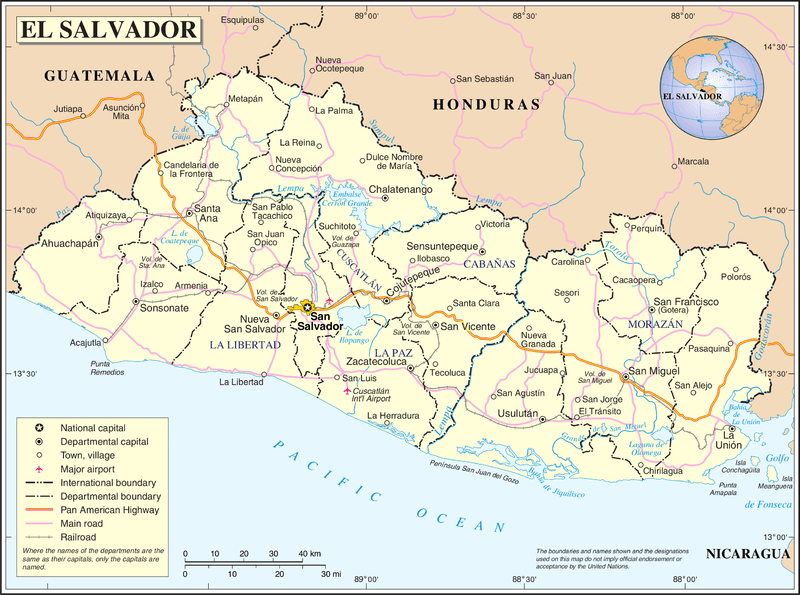
Map of El Salvador
Notable Dams and Reservoirs
These are some of the notable dams and reservoirs in El Salvador. Each plays a vital role in water resource management, power generation, irrigation, and recreational activities.
Cerrón Grande Dam and Suchitlán Reservoir: The Cerrón Grande Dam is located on the Lempa River in northern El Salvador. It forms the Suchitlán Reservoir, the largest reservoir in the country. The reservoir serves multiple purposes, including hydroelectric power generation, irrigation, and flood control. It is a vital water resource for agricultural activities in the region.
5 de Noviembre Dam and Guajoyo Reservoir: The 5 de Noviembre Dam, also known as the Guajoyo Dam, is situated on the Grande de San Miguel River in central El Salvador. It creates the Guajoyo Reservoir, which provides water for irrigation and hydroelectric power generation. The reservoir also supports recreational activities such as boating and fishing.
Cerrito de Calderón Dam and Ilopango Lake: The Cerrito de Calderón Dam is located on the El Engaño River, which flows into Lake Ilopango. While Lake Ilopango is a natural lake, the dam regulates the lake's water levels. It is a crucial reservoir for water supply, hydroelectricity, and irrigation.
Suchitlán II Dam and Suchitlán II Reservoir: The Suchitlán II Dam is a smaller dam located downstream of the Cerrón Grande Dam on the Lempa River. It forms the Suchitlán II Reservoir, a supplementary reservoir to the larger Suchitlán Reservoir. The reservoir helps regulate the flow of water and assists in meeting the region's water demands.
15 de Septiembre Dam and Santa Ana Reservoir: The 15 de Septiembre Dam is situated on the Acelhuate River near Santa Ana. It creates the Santa Ana Reservoir, a water supply source for drinking water, irrigation, and industrial uses. The reservoir also provides recreational opportunities for boating and fishing.
Cerritos Dam and Cerritos Reservoir: The Cerritos Dam is located in the department of San Salvador and forms the Cerritos Reservoir. It is primarily a water supply source for the metropolitan area of San Salvador and supports various water-related activities.
Notable Rivers
These are some of the notable rivers in El Salvador, each with its significance in terms of water supply, agriculture, hydroelectric power, and natural beauty.
Lempa River: The Lempa River is the largest and most important river in El Salvador. It originates in Guatemala and flows through Honduras before reaching El Salvador. It traverses the country from east to west and is a vital water resource for irrigation, hydroelectric power generation, and drinking water supply. The Lempa River also plays a crucial role in the country's economy and supports various agricultural activities.
Paz River: The Paz River is located in western El Salvador and flows through the department of La Libertad. It originates from the Cerro el Pital mountain range and empties into the Pacific Ocean. The Paz River is known for its picturesque landscapes and is popular among nature enthusiasts and photographers. It also provides water for irrigation and supports local ecosystems.
Grande de San Miguel River: The Grande de San Miguel River is situated in central El Salvador and is a significant watercourse in the country. It originates in the central mountain range and flows eastward, passing through several departments, including San Salvador and San Miguel. The river supports agriculture, supplies water for human consumption, and contributes to hydroelectric power generation.
Jiboa River: The Jiboa River is located in central El Salvador and has its source in the department of Santa Ana. It flows southward, passing through several departments, including La Libertad and San Vicente, before reaching the Pacific Ocean. The Jiboa River is crucial in irrigation, supplying water to agricultural areas. It also supports diverse flora and fauna along its banks.
Torola River: The Torola River is a river that flows through northeastern El Salvador, originating in the region of Morazán. It is known for its scenic beauty, with lush vegetation and rock formations along its course. The Torola River is famous for its impressive waterfalls, including the Cascada de Torola. It provides water for irrigation and supports local communities.
Goascorán River: The Goascorán River forms part of the border between El Salvador and Honduras. It originates in Honduras and flows through western El Salvador before reaching the Gulf of Fonseca. The Goascorán River is essential for agriculture and is often used for irrigation. It also contributes to the overall drainage of the region.
